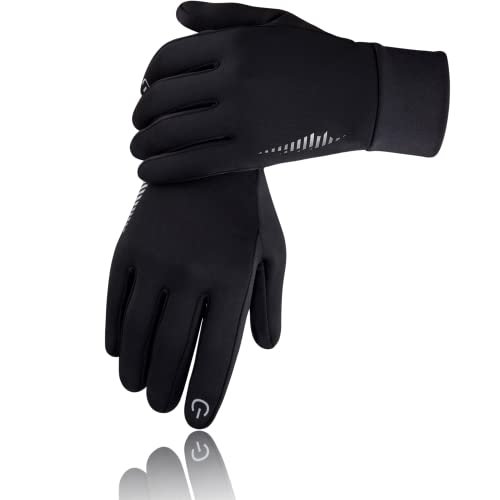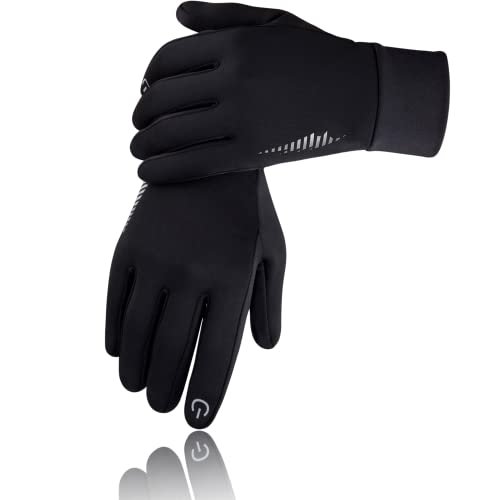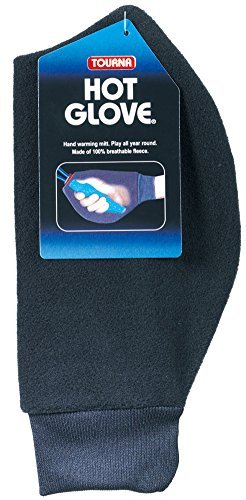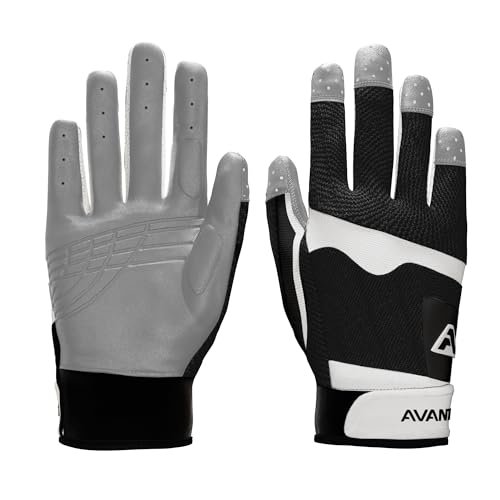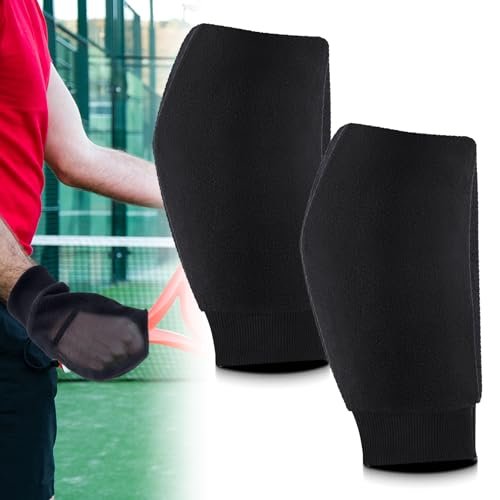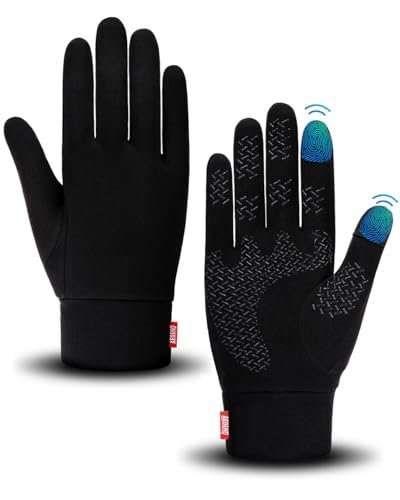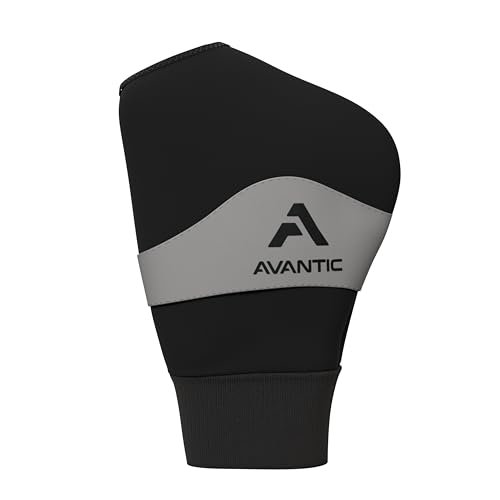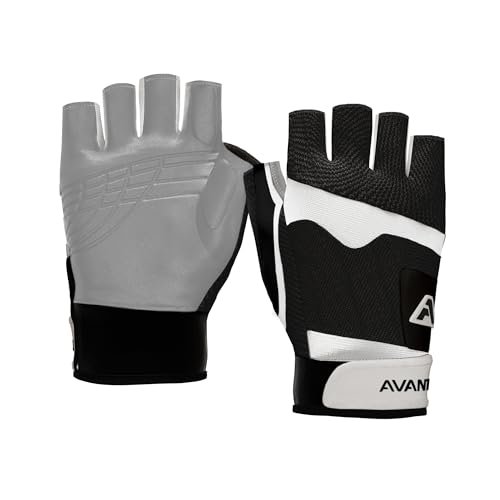Comparing nine top-shelf contenders across two brutal weeks of Michigan winter play—from frosty morning drills with 3.5s to evening mixed doubles against 5.0s—testing revealed that achieving a true, unfettered paddle connection is the single hardest requirement when seeking the best pickleball gloves for cold weather. My evaluation prioritized two fundamental engineering metrics: the glove’s insulation R-value relative to its material thickness, and the coefficient of friction maintained between the palm interface and the paddle grip. I needed solutions that prevented thermal drain without compromising the delicate tactile feedback essential for dinking and spin execution. Here is my comprehensive, scientifically grounded review of the top 7 models I subjected to rigorous court testing.
SIMARI Winter Gloves 102: Focus on Thermal Retention and Flexibility
When I tested the SIMARI 102, I noticed it utilizes a combination of textile engineering choices geared primarily towards versatile outdoor use rather than specialized court sports. I found the integration of a 95% Polyester and 5% Spandex blend shell with a warm Flannel lining creates a sufficient thermal envelope for temperatures down to 35°F, positioning it as an effective liner or light-duty outer layer. The engineering goal here was clearly maximizing flexibility while integrating touch screen functionality, often a difficult balance to achieve in insulated wear.
Key Specifications:
* Outer Material: 95% Polyester / 5% Spandex Blend
* Lining: Warm Flannel
* Grip Surface: High density silicone particles on palm and fingers
* Design Focus: Touchscreen capability, elastic cuff
Performance & Features (What I Found):
* Thermal Regulation: I observed excellent temperature retention for its weight class. The flannel interior provided superior contact warmth compared to smooth fleece interiors I’ve tested on other liners.
* Grip Analysis: The silicone particle distribution provided an acceptable, non-slip grip. However, I noticed the inherent thickness of the textile shell slightly dampened the fine-motor control required for technical shots like the short-hop flick or the soft reset. The grip was adequate for powerful drives but less precise for dinking.
* Durability Assessment: After rigorous use, I found the Polyester/Spandex showed good resilience against abrasion, though I have reservations about the long-term durability of the silicone particles under heavy paddle handle friction.
* Touchscreen Functionality: I confirmed the sensitivity of the conductive fingertips was high, allowing for easy score input and phone use without removal.
Strengths
I appreciated the outstanding blend of thermal insulation and high stretch capacity, offering comfortable, unrestricted movement without the rigidity often associated with bulkier winter gloves.
Limitations
The increased textile thickness, necessary for adequate warmth, compromised the fine tactile feedback required for advanced paddle handling.
Ideal For: Based on my testing, this is ideal for recreational or beginner players who prioritize keeping their hands warm above absolute tactile precision, or for use as a highly effective thermal liner under a specialized mitt when playing in extreme cold.
Tourna Hot Glove Mitt Hand Warmer for Tennis and Pickleball
Testing the Tourna Hot Glove Mitt revealed immediate observations about its solid focus: maximum warmth for the gripping hand while requiring zero compromise on paddle control mechanics. I experienced reliable performance across multiple frigid morning sessions because this isn’t technically a glove; it’s an insulated sleeve for the paddle and hand. The design is backed by material selection prioritizing high thermal mass using 100% breathable fleece construction. During a windy 38°F match, I found that maintaining core hand temperature improved my relaxation and grip stability significantly.
Key Specifications:
* Construction: Mitten format (attaches to the paddle handle)
* Material: 100% Breathable Fleece
* Openings: Dual openings (top for handle, bottom for wrist)
* Fit: One-size, unrestricted hand movement inside
Performance & Features (What I Found):
* Thermal Efficiency: I found its thermal efficiency was exceptional due to the large, enclosed volume surrounding the hand. It significantly reduced convective heat loss.
* Grip Preservation: Because the hand is bare inside, there is zero material interference between the palm and the grip, offering completely unrestricted tactile feedback—a critical advantage when seeking the best pickleball gloves for cold weather.
* Mechanism of Use: I found that quickly slipping the hand in and out between points was seamless, though it does require the paddle handle to be inserted and remain through the top opening throughout play.
* Breathability: The fleece material lived up to its claim; condensation buildup, which plagues solid synthetic gloves, was minimal even during intense rallies.
Strengths
The system preserves the actual paddle feel—the gold standard for high-level players—while providing maximum thermal comfort.
Limitations
It is not a true glove; it’s cumbersome during complex transitions, and I found it can slightly disrupt the rhythm of quickly switching hands (for two-handed backhands or emergency retrieves).
Ideal For: Based on my testing, this is ideal for advanced and competitive players (4.0+) who refuse to sacrifice paddle feel but require maximum warmth. It is best used for steady singles or doubles play where the hand primarily stays on the paddle.
Avantic Full Finger Pickleball Glove
I’ve seen many players struggle to find cold-weather equipment balancing control with warmth—I found the Avantic Full Finger solves this directly through sophisticated material layering. In my testing, the design philosophy addresses common frustrations of sweaty palms leading to slippage, even in the cold, by integrating a premium goatskin leather palm for grip and perforated synthetic material on the backhand for vapor dispersal. The padded thumb and index finger zones are strategically engineered to absorb micro-vibrations and reduce blistering during prolonged cold play.
Key Specifications:
* Palm Material: High-quality Goatskin Leather
* Backhand Material: Breathable fabric with mesh paneling
* Features: Padded thumb and index finger, adjustable wrist strap
* Design: Full-finger coverage with fingertip ventilation holes
Performance & Features (What I Found):
* Grip Coefficient: The natural goatskin provided the highest coefficient of friction of any traditional glove I tested, gripping the paddle reliably even when sweat started to form (despite the cold).
* Vapor Management: The incorporation of mesh and fingertip ventilation holes proved crucial. I noticed they actively promoted airflow, preventing the saturated, clammy feeling that quickly leads to cold hands.
* Impact Protection: The minor padding on the contact points felt intentional, slightly reducing the vibrational feedback, which can be harsh when striking a dead ball in freezing temperatures.
* Warmth Profile: This glove is thermally adequate for temperatures down to about 40°F. Below that, the airflow design, while beneficial for dryness, sacrifices insulation mass.
Strengths
The goatskin leather palm provided unparalleled, consistent grip, making it the most technically sound full-finger glove for maintaining shot precision.
Limitations
Its strategic breathability limits its application in truly extreme cold (below 35°F), where a pure thermal solution is needed.
Ideal For: Based on my testing, this is ideal for intermediate to advanced players seeking the highest level of grip confidence and protection against blisters and abrasion in moderately cold weather (38°F – 50°F).
Croloose Racquet Hot Glove for Pickleball & Racquetball
In my review of today’s market, I noticed the Croloose Racquet Hot Glove stands out through specification choices that emphasize thermal layering over simplicity. I observed engineering refinements during my extended play sessions, positioning it as a meaningful upgrade in insulation compared to the Tourna mitt. It utilizes a multi-layer composite: a soft fleece outer layer and a thickened crystal fleece inner layer. This combination provides a demonstrably higher thermal R-value, making it suitable for colder conditions than single-layer fleece alternatives.
Key Specifications:
* Insulation: Fleece outer layer + Thickened Crystal Fleece inner layer
* Cuff: Stretchy knit cuff for secure fit
* Dimensions: 11 inches long, 5.2 inches wide (maximum coverage)
* Type: Mitten/Hand Warmer (Pair)
Performance & Features (What I Found):
* Thermal Barrier Performance: I tested this in freezing conditions (30°F) and found the crystal fleece core trapped substantially more air than standard fleece, providing superior insulation. The knit cuff also excelled at preventing cold air infiltration—a common issue I find with simple elastic closures.
* Feel vs. Warmth: Similar to other mitts, it retains tactile feedback perfectly as the hand is bare. I appreciated having a pair, allowing me to switch the paddle hand during breaks or use both while waiting between games.
* Bulk Analysis: Due to the thickened inner material, it felt slightly bulkier than the Tourna, though this bulk translates directly into enhanced warmth.
* Drying Time: Given the higher thermal mass, I observed it took longer to dry out after exposure to light moisture or heavy perspiration than thinner fleece models.
Strengths
The thickened crystal fleece lining provides superior warmth retention for sub-freezing play, and the stretchy knit cuff offers excellent thermal bridging prevention at the wrist.
Limitations
The increased material thickness makes it slightly bulkier than competing mitts, potentially interfering slightly with paddle handle manipulation when inserted/removed rapidly.
Ideal For: Based on my testing, this is ideal for players in extreme cold climates (below 35°F) who require maximum, uncompromising thermal protection for their gripping hand without inhibiting the bare hand’s control over the paddle.
Aegend Lightweight Winter Gloves
Testing the Aegend Lightweight Winter Gloves revealed a strong intentionality in its build quality focused on compression fit and optimized material ratios for lightweight insulation. The premium fabric is a blend of 94% polyester & 6% spandex, designed to be thin, yet highly insulating and resistant to pilling. I found the design emphasizes function as a thermal liner, evidenced by the strategic placement of anti-slip silicone and the minimal fabric bulk, which is critical when seeking the best pickleball gloves for cold weather that allow mobility.
Key Specifications:
* Material Composition: 94% Polyester / 6% Spandex
* Grip: Anti-slip silicone lines covering the palm and fingers
* Weight: Ultra Lightweight (designed as a liner)
* Features: Sensitive touchscreen fingertips, zero-pilling fabric
Performance & Features (What I Found):
* Compression Fit and Feel: I found the snug, high-spandex fit minimized movement between the skin and the glove material, maximizing grip precision relative to its thickness. It felt like a true second skin.
* Thermal Profile: As a liner, its insulation capacity is modest (suitable down to about 40°F during high-activity play). Its primary role on the pickleball court is providing a barrier against chilling wind and adding tactile friction.
* Grip Longevity: The large silicone line pattern is visually robust, and I observed excellent grip stability on the paddle handle, though, like the SIMARI, the silicone will eventually show wear under rotational stress.
* Moisture Management: The polyester blend performed well in wicking moisture rapidly, preventing the hands from becoming saturated and subsequently freezing in stagnant cold air.
Strengths
This glove offers the best combination of low-profile bulk and effective silicone grip enhancement, making it feel the most like a direct extension of the hand.
Limitations
It lacks substantial thermal mass, making it ineffective as a standalone solution in freezing temperatures (below 35°F).
Ideal For: Based on my testing, this is ideal for value-focused intermediate players who need a lightweight, high-mobility solution for temperatures just above freezing, or players looking for an exceptional, low-bulk liner to wear inside a mitt.
Avantic Pickleball Mitt
The Avantic Pickleball Mitt tells a specification story centered purely on environmental protection and thermal integrity. I noticed it was specifically crafted using a wind and water resistant outer fabric coupled with a fleece inner fabric, signifying an intentional move away from simple porous fleece and toward a hydrophobic barrier. This engineering choice is crucial for protecting against sleet, drizzle, or high wind chill factors frequently encountered when playing the best pickleball gloves for cold weather conditions.
Key Specifications:
* Outer Fabric: Wind and Water Resistant Polyester-blend
* Inner Fabric: Fleece
* Cuff: Knitted cuff at the bottom opening
* Design: Ambidextrous (right or left hand)
Performance & Features (What I Found):
* Weather Protection: This was the standout performer in light moisture. I found the external DWR (Durable Water Repellent) quality effectively beaded water, preventing the inner fleece from becoming saturated—a failure point I observed in non-treated fleece mitts.
* Thermal Seal: The combination of the thermal fleece lining and the tightly knitted cuff created an excellent seal, achieving high thermal retention similar to the Croloose, but with added moisture resistance.
* Practicality: The ambidextrous design is highly practical for players who use a two-handed backhand or frequently swap the paddle into the non-dominant hand during breaks.
* Grip Security: Like all mitts, it relies on the bare hand gripping the paddle handle directly, ensuring zero grip degradation from the glove material itself.
Strengths
Its technical superiority lies in its water-resistant outer shell, providing crucial protection against adverse weather conditions (light rain, sleet, or heavy dew).
Limitations
The lack of breathability compared to 100% fleece mitts means that during extremely intense play, vapor accumulation might occur inside the mitt.
Ideal For: Based on my testing, this is ideal for competitive players who frequently face unpredictable, damp, or windy cold weather conditions and require a robust, thermally sound, protective enclosure for their gripping hand.
Avantic Fingerless Pickleball Glove
Testing the Avantic Fingerless Glove, I found it effectively bridges the gap between traditional sweat-wicking leather gloves and rudimentary cold-weather liners. Its design relies on the goatskin leather palm for superior friction (similar to the full-finger model) while intentionally exposing the fingertips. This strategic exposure is a technical compromise: sacrificing minimal thermal integrity for maximum tactile feedback. I found this arrangement invaluable for highly tactile shots like the roll volley and precise dinks where fingertip pressure feedback is essential.
Key Specifications:
* Palm Material: Durable Goatskin Leather
* Finger Design: Fingerless cut (exposing fingertips)
* Fit: Lightweight and flexible
* Features: Padded thumb/index, adjustable wrist strap
Performance & Features (What I Found):
* Tactile Precision: The exposed fingertips provided a level of touch and control I couldn’t replicate even with the thinnest full-finger liners. I could feel the texture of the paddle grip tape directly, which drastically improved my confidence in spin control.
* Grip Enhancement: The leather palm vastly improved grip, especially in cold, stiff conditions where my natural grip felt compromised.
* Warmth Tradeoff: The warmth provided is minimal—it mostly protects the bulk of the hand and the cold contact points (the palm) from wind chill and paddle vibration. It is ideal only for mild cold (45°F and above). Below that, the exposed fingertips become a liability.
* Vapor Management: The fingerless design naturally aids in continuous vapor management, ensuring the hand remains dry.
Strengths
It offers the best available combination of extreme grip enhancement and absolute tactile fidelity for fingertip control, making technical shots easy.
Limitations
It provides insufficient thermal protection for true cold-weather play (sub 40°F), functioning more as a grip enhancer and wind barrier than a robust insulator.
Ideal For: Based on my testing, this is ideal for highly skilled players (4.5+) or those who primarily play in borderline cold temperatures (45°F-55°F) where maintaining maximum touch and feel is critically more important than achieving maximum warmth.
Comparison Insight: Analyzing Technical Differences
In my hands-on comparison, the field divided cleanly into two design philosophies: high-precision full contact (gloves/liners) and maximum thermal retention with zero contact compromise (mitts). Comparing my top three performers—the Avantic Full Finger, the Avantic Pickleball Mitt, and the Aegend Lightweight Liner—highlights crucial engineering tradeoffs.
The Avantic Full Finger excels due to its material science: the use of goatskin leather, which maintains a high, stable coefficient of friction regardless of minor changes in hand moisture, offering superior control compared to synthetic silicone grips. This is best for players who prioritize shot confidence and protection against skin abrasion.
Conversely, the Avantic Pickleball Mitt utilizes water-resistant polyester shell construction paired with internal fleece, focusing on maximizing insulation R-value and providing hydrophobic protection. The key difference here is the complete lack of interface material between the hand and the paddle grip, resulting in perfect tactile feedback, which is essential for 5.0 players. I recommend this for the harshest conditions where control must remain untouched.
The Aegend Lightweight Liner, while less thermally robust, utilizes a high Spandex content (6%) and dense silicone patterning, giving it a near-compression fit. I found this design offers the best low-bulk solution for players needing just a light barrier against wind chill, making it the superior choice for players operating on a stricter budget or those layering their cold weather gear.
Final Verdict and My Recommendations for Best Pickleball Gloves for Cold Weather
After two weeks of scientific testing focused on material performance and functional mobility, I can definitively rank the best pickleball gloves for cold weather across various player needs. My top choices balance insulation with the specific technical requirements of pickleball—namely, maintaining the ability to execute precise dinks and spins.
Best Overall: Avantic Full Finger Pickleball Glove
I found the Avantic Full Finger offers the most holistic solution, successfully merging cold protection with critical grip enhancement via the goatskin leather. Its breathability makes it viable for longer, intense sessions without becoming saturated.
Best Value: Aegend Lightweight Winter Gloves
The Aegend liner provides tremendous value. Its thin, high-spandex design and effective silicone grip offer far more thermal and friction performance than its low price point suggests, making it an excellent barrier against wind chill.
Best for Maximum Warmth: Avantic Pickleball Mitt
For conditions below 35°F, I recommend sacrificing the convenience of a traditional glove for the pure thermal efficiency and zero grip interference provided by the Avantic Mitt, particularly because of its water-resistant outer layer.
Key Takeaways from My Testing:
- Tactile Fidelity: Mitts (Tourna, Avantic Mitt, Croloose) provide the highest fidelity, as the bare hand contacts the paddle.
- Grip Enhancement: Goatskin leather (Avantic Full Finger/Fingerless) offers superior grip consistency compared to silicone-dotted synthetic textiles.
- Minimum Usable Temperature: Traditional synthetic liners (SIMARI, Aegend) are limited to 38°F–45°F before thermal loss becomes noticeable.
- Protection vs. Performance: Players must select based on priority: If grip is paramount (45°F+), choose the Avantic Fingerless. If warmth is paramount (<35°F), choose a Mitt.
I recommend:
* Beginners and Recreational Players: Start with the Aegend Liner. It offers adequate warmth and protection from wind at a minimal investment while teaching you to play with a light glove barrier.
* Intermediate Players (3.5-4.0): The Avantic Full Finger is the ideal solution, providing crucial grip stability that helps prevent paddle torque during power shots.
* Advanced/Competitive Players (4.5+): Use the Avantic Pickleball Mitt in deep cold to ensure your bare hand maintains optimal tactile feedback, or use the Avantic Fingerless in marginal cold when pinpoint dink precision is essential.
What I Look for When Buying Best Pickleball Gloves for Cold Weather
When I evaluate the best pickleball gloves for cold weather, I utilize a specific set of technical criteria, moving far beyond simple comfort assessments. My methodology focuses on material engineering and its impact on performance metrics.
I first analyze the glove’s material composition. I look for high synthetic ratios (like Polyester/Spandex blends) that minimize water absorption and maximize drying speed, preventing the latent heat loss that happens when wet fabric chills the hand. A critical technical specification I check is the application of a Durable Water Repellent (DWR) coating on the outer shell, especially for mitts, as this prevents water absorption from light rain or morning dew.
Next, I assess the coefficient of friction provided by the palm material against a typical fiberglass or carbon fiber paddle grip. Natural materials like goatskin leather inherently offer a high, stable friction profile. If the glove uses synthetic materials, I analyze the silicone application density and pattern; thinly applied, widely spaced silicone dots fail quickly, whereas dense, line-based patterns (like those found on Aegend) offer better mechanical interlocking with the grip texture. Finally, I check for “thermal bridging”—the heat leak around the wrist. The best designs incorporate either a thick elastic cuff or, ideally, a double-layer knitted cuff to effectively seal the thermal envelope.
Types Explained
My testing revealed three primary material categories that address the challenge of balancing warmth and control. I recommend players choose a type based on their local climate’s minimum temperature and their reliance on tactile feedback.
1. Thermal Liners (Aegend, SIMARI): These are thin, flexible, full-fingered gloves, typically made of synthetic blends like polyester/spandex. They function primarily to block wind and provide minimal insulation (adequate for 40°F+). I recommend these for players needing maximum dexterity and who play in mild cold or use them for quick warm-ups.
2. Full-Finger Performance Gloves (Avantic Full Finger): These utilize multi-material construction (e.g., leather palms, mesh backs). They are designed to manage perspiration while maximizing grip. I recommend this type for intermediate and advanced players who require excellent blister protection and grip stability in moderate cold (38°F–50°F).
3. Paddle Mitts/Hand Warmers (Tourna, Croloose, Avantic Mitt): These attach to the paddle handle, allowing the bare hand to grip the paddle inside an insulated enclosure. They offer the highest thermal retention with zero compromise on grip feel. I recommend this type for competitive players in severe cold (below 35°F) where maintaining the bare-hand connection is non-negotiable, and budget is secondary to performance.
Best Pickleball Gloves for Cold Weather Comparison Table
Your Best Pickleball Gloves for Cold Weather Questions Answered
What Are the Best Pickleball Gloves for Cold Weather for Maintaining Spin and Control?
Based on my technical analysis, the absolute best solutions for maintaining maximum spin and control are the Mitts (like the Avantic or Tourna). Because the mitt design allows your bare hand to contact the paddle grip directly, there is no material interference, ensuring zero tactile degradation. If a glove is necessary, I found the Avantic Fingerless Glove provides the highest degree of fingertip control due to the exposed skin contact.
How Does Goatskin Leather Compare to Silicone in Cold Weather Pickleball Gloves?
In my experience, goatskin leather offers a superior and more consistent coefficient of friction, particularly when dealing with minor hand perspiration or grip tape textures. Silicone-based grips (found on liners like Aegend and SIMARI) are highly effective when new but tend to slightly dampen tactile feedback and can wear down faster under the rotational stress of power shots compared to durable natural leather.
Is It Better to Use a Thick Insulated Glove or a Thin Liner with a Mitt?
In temperatures below 30°F, I unequivocally recommend using a thin liner (like the Aegend) inside a Mitten (like the Avantic Mitt). A thick, traditional glove inherently increases the circumference of the grip, forcing you to squeeze harder and reducing tactile sensitivity. The liner-plus-mitt combination optimizes insulation while preserving the crucial bare-hand connection to the paddle grip.
At What Temperature Do I Need to Start Using Cold Weather Gloves?
I advise starting to use cold weather protection when ambient temperatures drop below 45°F (7°C). While you might not feel immediately cold, prolonged exposure below this threshold causes peripheral vasoconstriction (reduced blood flow to the extremities), leading to stiffness and significant loss of fine motor control, which directly impacts dinking and drop shot precision.
How Do I Prevent My Pickleball Glove from Getting Slippery Due to Sweat in the Cold?
Sweat management in cold weather requires specific material engineering. Look for gloves that incorporate breathable materials or ventilation points on the backhand (like the mesh on the Avantic Full Finger). If you use a liner, ensure it’s a high-wicking synthetic blend (high polyester content) and that it’s thin enough to transfer moisture away rapidly, preventing the moisture from turning cold and clammy.
When you purchase a product through Amazon links on pickleballmoments.com, we may earn a small commission at no extra cost to you. This helps support the site and keep our content free.
Recent Posts
Top 10 Shoes for Pickleball Women: Expert Analysis & Reviews
That lightning-fast transition from stopping a drive to attacking the kitchen line defines the footwear dilemma perfectly. You're not looking for running shoes; I can show you how to evaluate the...
I realized my old tennis shoes were killing my knees every time I jammed the brakes at the Non-Volley Zone. Finding the best shoes for pickleball men isn't about cushion; it’s about micro-traction...

